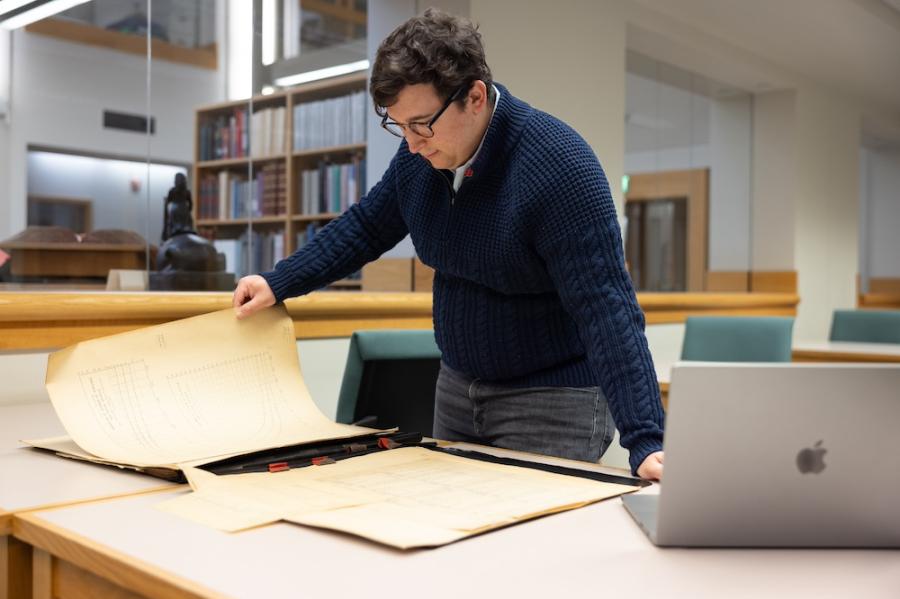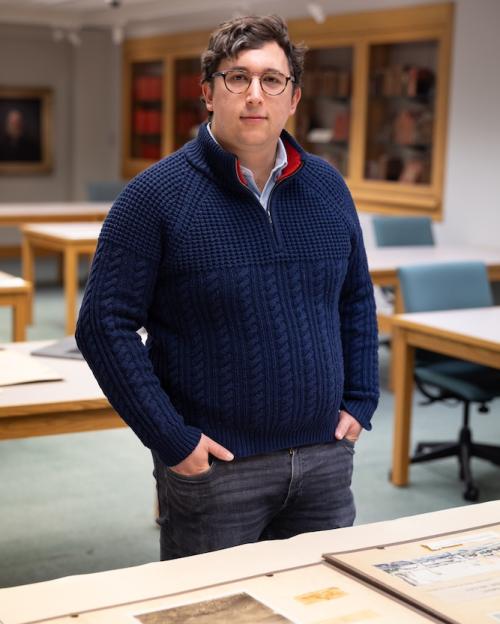Renting an apartment in a major city can be more competitive sport than home tour. Historian Jacob Anbinder has been through the process himself, first in New York City right out of college and later in the Boston area during graduate school.
“You show up every day to look at three or four apartments and you’re there with 20 other people and everyone is holding their application packets with all your bank statements, and in many cases all your parents’ bank statements, too, because you need guarantors,” said Anbinder, a Klarman Postdoctoral Fellow in history in the College of Arts and Sciences. “These are the people you’re competing against and if you don’t apply right there, you’re not going to get the place. It’s crazy, the amount of money you have to put down just to rent an apartment.”
The experience inspired Anbinder, a historian with an interest in cities and strong ties to public policy, to investigate why supposedly liberal, progressive cities – such as New York, Boston and San Francisco – have become so expensive in recent decades that they are unaffordable for many Americans. In addition to economic reasons for the current housing crisis, Anbinder is finding political ones, as well, that he traces to the ideological evolution of the Democratic Party during the 20th century.
Aided by Cornell’s extensive urban planning archives, Anbinder is using his Klarman Postdoctoral Fellowship to write a book exploring the intertwined stories of political liberalism and the housing shortage, which expands on his doctoral work at Harvard University.
Contrary to popular perception, housing in American cities has not always been this expensive, Anbinder said. In fact, when he started digging into the history, he found that they’ve never been this expensive.
“You can actually date the origins of this affordable housing shortage,” he said. “Urban residences are not just inherently expensive because cities are highly desirable places; there’s a moment in the 1970s and 1980s when these places start to become expensive independent of macroeconomic cycles.”
The chief reason was a lack of housing supply. Relative to the size of the U.S. population, the rate of home building peaked in the early 1970s and has never been equaled, Anbinder said. In the U.S. right now, he’s found, fewer houses are being built per capita than at any other economic boom time in recent American history.
Few historians have studied the role of this housing crisis in shaping modern American history, Anbinder said. Economists and political scientists have given it more attention, but too often assume that its root cause is financial self-interest—that is, incumbent homeowners who act in concert to boost the value of their property by restricting the supply of available homes.
“Homeowners might oppose new housing supply because they know the new housing supply will cause the value of their housing to decline and therefore, being economically rational, they oppose it,” Anbinder said.
But opposition to new housing ran deeper than rational self-interest, Anbinder argues; rather, it was the product of a more fundamental shift that was taking place within the Democratic Party over the meaning and goals of liberalism itself.
Having produced the excesses and injustices of the era of urban renewal, the pro-growth mindset that had characterized the Democrats’ urban agenda since the New Deal seemed, by the 1970s, completely discredited, Anbinder said. Instead, an ascendant generation of young liberals believed that the future of their movement lay in ideas such as neighborhood self-determination, environmental preservation, and a newfound skepticism toward real-estate developers and their bulldozers.
“Through the creation of new institutions, such as New York City’s Landmarks Preservation Commission and California’s Coastal Commission—as well as innumerable local zoning codes that limited population growth in places like Marin County and the Boston suburbs—these ‘antigrowth liberals’ achieved many of their objectives,” Anbinder said. “In so doing, however, they also set the stage for the housing shortages that would soon become endemic in their own backyards.”
Teasing apart the political roots from the economic in this history has ramifications for finding solutions, he said.
“Historians of the United States and elsewhere are very interested in the transformation of liberalism since the 1960s, and Jake has a compelling and original story to tell,” said Lawrence B. Glickman, the Stephen and Evalyn Milman Professor in American Studies and Anbinder’s faculty host in the Department of History (A&S). “His dissertation on the ‘growth revolt’ in urban politics is fascinating and gets at some of the key tensions within modern liberalism, because the revolt against growth popular among many urban liberals has had a number of effects that we might consider conservative. But to frame it this way is to not fully recognize this capacious nature of his study of urban politics and liberalism in a variety of forms.”
Anbinder sees his work straddling history and public policy, and he said that Cornell is a great place to do his research. He’s taking advantage of Cornell Library’s excellent history urban planning archive, including the Progressive Cities and Neighborhood Planning collection assembled by Pierre Clavel, professor emeritus of city and regional planning in the College of Architecture, Art, and Planning. Cornell also holds archives of two major American urban planning organizations of the 1970s.
Anbinder is also building connections with scholars in the College of Architecture, Art and Planning, and plans to give a talk this spring at the City and Regional Futures Colloquium.
The Klarman Fellowship program, too, Anbinder said, encourages dialogue across disciplines, among “people who are not just interested in their own work and not just interested in themselves but interested in each other.”







